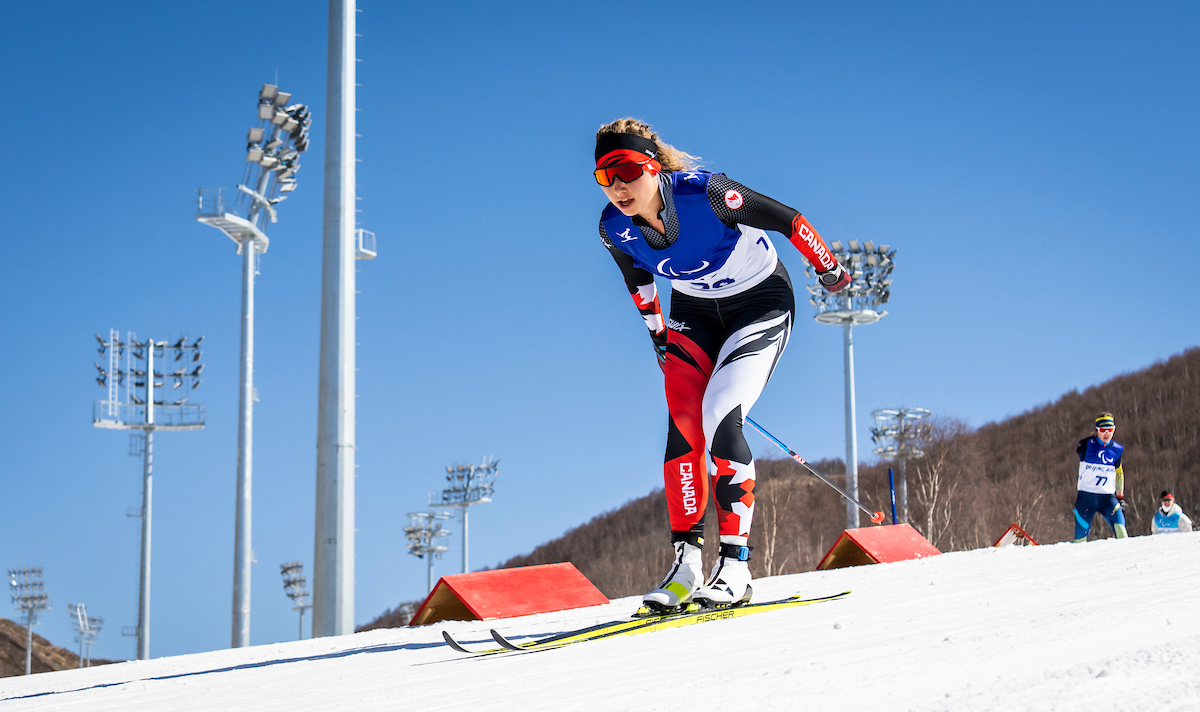
Para nordic skiing
Winter Sports
Para nordic skiing includes both cross country skiing and biathlon in the Paralympic world. As is the case for alpine, there are classification for physically and visually impaired athletes. Races are held in distances from one to 20 kilometres along with relays in both sports
Cross country skiing involves short, middle and long distances, ranging from 2.5 km to 20 km, or participate in a team relay using either classical or free techniques.
The sports made its Paralympic Games debut in 1976 at Örnsköldsvik, Sweden. Men and women used the classical technique in all cross-country distances until skating was introduced by athletes at the Innsbruck 1984 Paralympic Winter Games. Today cross-country skiing is practiced by elite athletes in more than 20 countries.
Canada’s Brian McKeever has earned 20 Paralympic medals in five Games, including 16 gold, the most victories ever by a Canadian winter Paralympian. Colette Bourgonje competed at seven Paralympic Winter Games and was a double medallist in 2002, 2006 and 2010.
Biathlon combines cross-country skiing and rifle shooting, but Para Biathlon differs from Olympic biathlon because skiers must always shoot from a prone position. Athlete start times are staggered by a 30 second interval system.
Biathlon is divided into short-distance and long-distance. In short-distance, skiers race around a 2-5km loop, stopping twice to take five shots at a target placed 10m away. Long-distance is similar but skiers must complete five trips around the loop, stopping to shoot four times. For the shooting portion, skiers with a visual impairment use an electronic beam system including a headset that plays a varying acoustic signal to indicate when they are on target. The higher the pitch, the closer to the center of the target.
Each shooting bout has five targets in a row that must be hit within their 15mm bullseye. In short distance, a penalty loop must be skied for each missed shot. Depending on the athlete’s classification, the loop may be 100m or 150m. In long-distance individual race, a one-minute time penalty is added to the athletes’ time for each missed shot.
Biathlon for athletes with a physical disability was first introduced at the Paralympic Games at Innsbruck, Austria in 1988. It became a medal event for men and women at the Lillehammer Games in 1994 where, for the first time Nordic skiers competed at the same venue used for the Olympic Winter Games.
The International Paralympic Committee is the world governing body, following modified rules of the International Biathlon Unit and International Ski Federation respectively. Nordiq Canada is the National Sport Federation.
Skiers in cross-country and biathlon compete in several different sport classes, depending on the activity limitation that their impairment causes.
Standing classes are LW2-LW9: LW2 to LW4 are for skiers with leg impairment; LW5 to LW8 for skiers with arm impairments and LW9 for skiers with a combination of arm and leg impairments.
Sit-skiing classes are LW10 to LW 12: All sit-skiers have impairments affecting their legs.
Skiers with visual impairment are classified B1 to B3.
"*" indicates required fields